The unique geology of the Eastern Mediterranean is not defined by one major tectonic interaction. Instead, it is the result of many small plates interacting which over thousands of years have rifted, converged, and slid past each other to create a region with diverse rock formations.
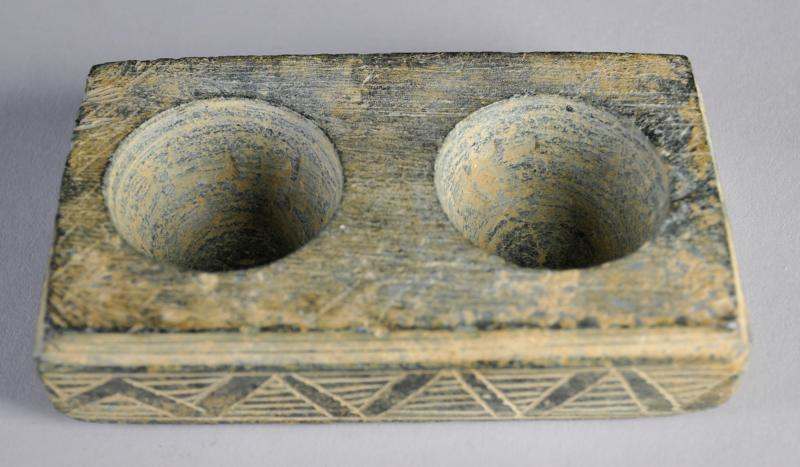
Faceted Core
Obsidian is an extrusive igneous rock. It is formed on the earth’s surface, when lava with a high silica content rapidly cools to volcanic glass. Like many ancient peoples, the people of the ancient Mediterranean used obsidian to make tools and weapons. Worked obsidian can have extremely sharp edges; some present-day surgical scalpels have obsidian blades. The chemical composition of obsidian differs depending on its geographic origin, which allows researchers to identify the source of obsidian objects, and to reconstruct ancient trade routes. We do not know where this core was made, but the obsidian used to carve it came from the Greek island of Melos.
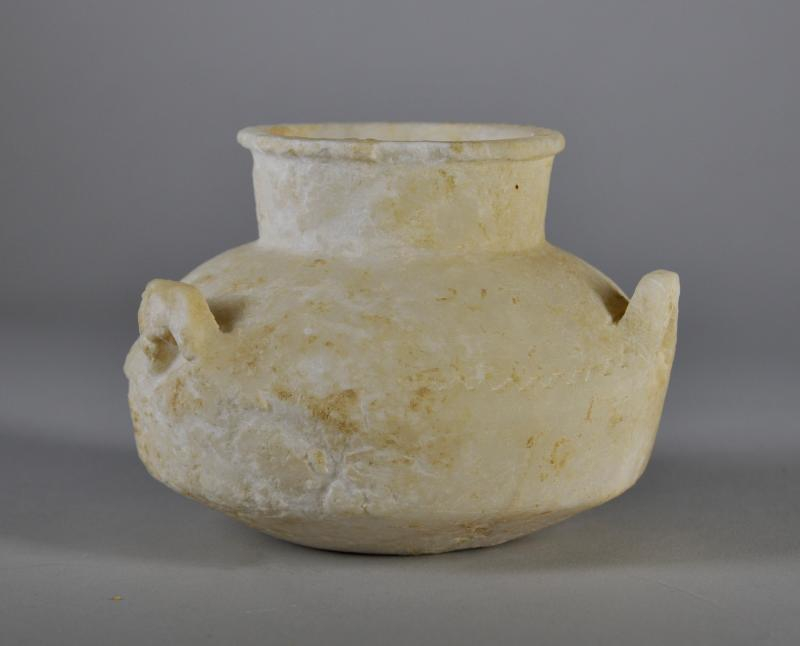
Alabaster is a sedimentary rock containing the mineral gypsum (hydrated calcium sulfate). It is slightly soluble in water, so it is usually used to make decorative objects for indoor use, like this storage jar.
Marble is a metamorphic rock, formed when carbonates and other minerals in the earth’s crust experience high temperatures and pressures. Different combinations of minerals produce different colors of marble. The stones in this panel come from modern-day Greece, Turkey, and Algeria. Opus sectile panels like this one displayed their owners’ wealth and the power of the Roman Empire.
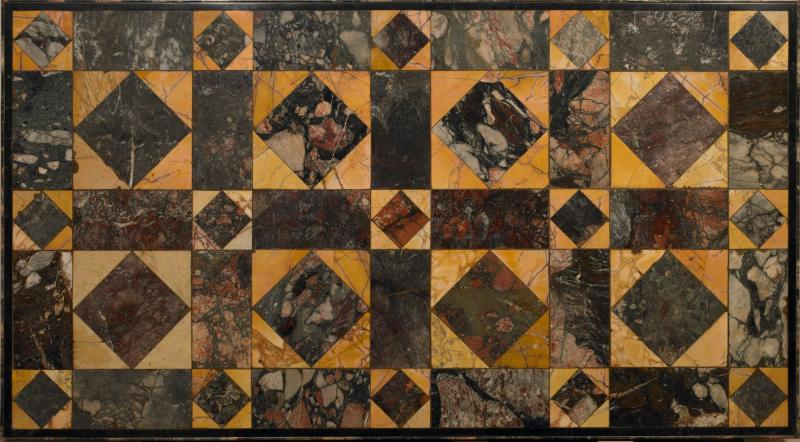
Head of the Diadoumenos
Marble is a metamorphic rock, formed when carbonates and other minerals in the earth’s crust experience high temperatures and pressures. People throughout history have valued marble for its fine-grained crystal structure and high luster. The word “marble” comes from the ancient Greek word “marmaros,” which means “crystalline, sparkling rock.” Wealthy Romans studied Greek literature and decorated their homes with marble copies of famous Greek sculptures, like this one. These marble copies vastly outnumber the surviving ancient Greek bronzes they were based on.
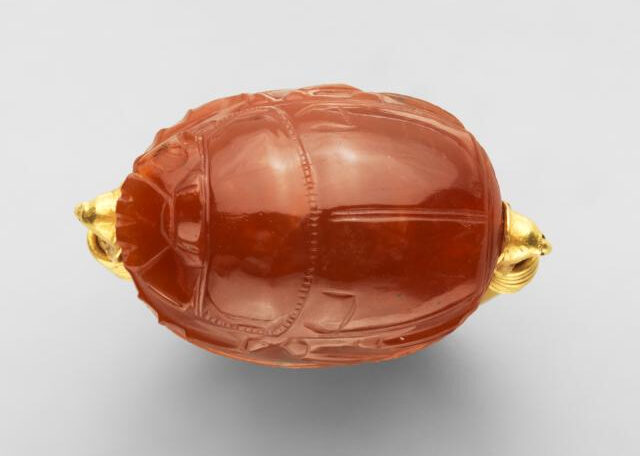
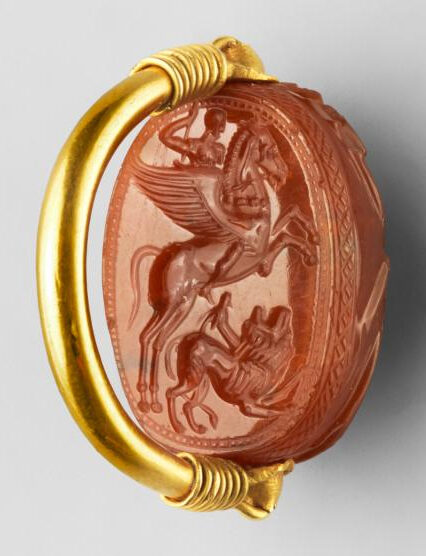
Carnelian is a fine-grained variety of the mineral quartz. Its red color comes from iron in the mineral structure. Etruscan carved gems like this one could be used as jewelry and as an owner’s personal seal. The Egyptian-inspired scarab shape and the scene from Greek mythology on the reverse illustrate cross-cultural contact in the ancient Mediterranean.
